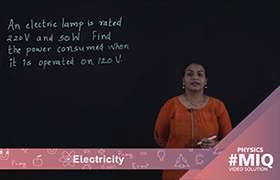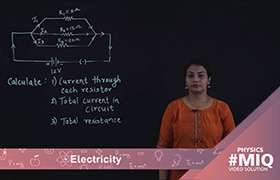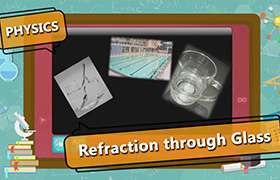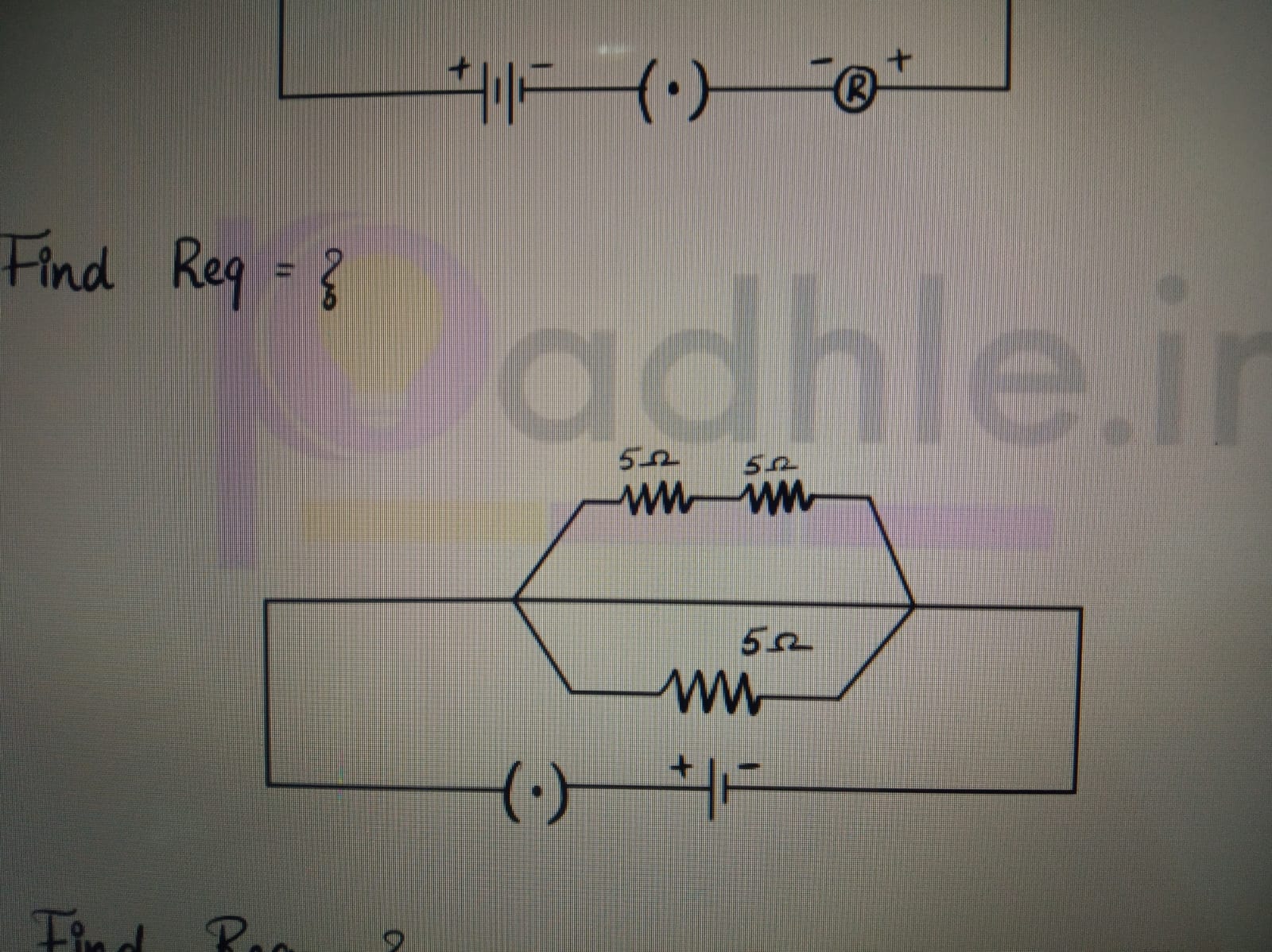CBSE Class 10 Answered
Why emergent ray is parallel to the incident ray for refraction through a rectangular glass slab?
Asked by sucharitasahoo1 | 04 Jan, 2018, 03:05: PM
Let i be the angle of incidence at air-glass boundary of glass slab and r be the angle of refraction. they are related as per snell's law

since the refractive index is > 1, angle of refraction is less than angle of incidence. It means the light ray bend towards the normal drawn at the incident point of light ray. At the other side glass-to-air boundary, light ray has to travel from denser medium to rare medium. If we consider the angle of incidence i1 and angle of emergence r1 at glass-to-air boundary, snells law is written as

now the refractive index of air with respect to glass is <1, angle of emergence is greater than angle of incidence i1 at glass-to-air boundary.
hence light ray deviates away from normal drawn at the glass-to-air boundary and it can be seen that the angle of refraction r and angle of incidence i1 at glass-to-air boundary are equal. hence the magnitude of bending of light ray towards the normal at air-glass boundary is same as the magnitude of deviation away from normal at glass-air boundary. Magnitudes of both effects are same but in opposite manner. These bending and deviations are taking place at different points in the line which is not parallel to the slab side due to diffraction in the glass slab, the incident ray and emergent ray do not coincide but parallel to each other
Answered by | 04 Jan, 2018, 06:33: PM
Application Videos
Concept Videos
CBSE 10 - Physics
Asked by agankitgupta938 | 18 Apr, 2024, 04:29: PM
CBSE 10 - Physics
Asked by infinityupgraded | 13 Apr, 2024, 08:17: AM
CBSE 10 - Physics
Asked by suryamr2019 | 08 Mar, 2024, 04:32: PM
CBSE 10 - Physics
Asked by sheetal.kolte | 04 Mar, 2024, 12:38: PM
CBSE 10 - Physics
Asked by shrilakshmimunoli | 01 Mar, 2024, 01:15: AM
CBSE 10 - Physics
Asked by khajannirwan | 27 Feb, 2024, 10:20: PM
CBSE 10 - Physics
Asked by sailakshmi.avinesh | 13 Feb, 2024, 07:03: AM
CBSE 10 - Physics
Asked by saurabhjd527 | 30 Jan, 2024, 07:55: PM
CBSE 10 - Physics
Asked by saanviyadla | 24 Jan, 2024, 07:06: PM













